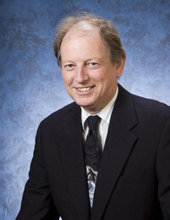Texas A&M Receives $14.4 Million to Study Gulf Oil Spills
– August 31, 2011
Texas A&M University researchers in the College of Geosciences and the Dwight Look College of Engineering are the lead investigators in a $14.4 million project that will investigate the transport and eventual fate of petroleum fluids that have erupted at depth, such as those that resulted from the Deepwater Horizon spill last year.
(From Texas A&M / by Karen Riedel ) — The research board of the Gulf of Mexico Research Initiative announced the award Tuesday (Aug. 30). Joining Texas A&M in the project are 10 researchers from the University of Texas at Austin, Massachusetts Institute of Technology, Stanford University, University of California at Berkeley, North Carolina State University, Woods Hole Oceanographic Institution, University of Hawaii, University of Maryland, and Georgia Institute of Technology.
Piers Chapman, head of Texas A&M’s Oceanography Department and lead investigator for the project, says the grant, Gulf Integrated Spill Response, will help industry, government and decision makers better understand and predict how fluids behave in the deep ocean environment. “The problems start at the wellhead,” he says. “Deepwater Horizon was one of the deepest wells ever drilled, and the first to have a blow-out at this depth. No one knew how the petroleum that escaped into the Gulf of Mexico would behave.”
Chapman pointed out that industry trends are to drill in increasingly deeper waters. The BP well was drilled 6.6 miles beneath the seafloor in nearly a mile of water. “That kind of extreme drilling is becoming the norm,” Chapman says.
Over the three-year period of the grant, the team of researchers will first develop an integrated, multi-scale modeling systems to characterize petroleum-fluid behavior from droplet formation to dispersal throughout the Gulf of Mexico. The second stage is to test the systems in the field to validate the models.
As lead university, Texas A&M through its College of Geosciences has the responsibility to direct the grant, including financial and reporting management. In addition to Chapman, the executive committee comprises oceanographers Robert Hetland and Steve DiMarco and civil engineer Scott Socolofsky from the Dwight Look College of Engineering. Other College of Geosciences researchers are Thomas Bianchi, Ping Chang, Norman Guinasso, Matt Howard, John Kessler, Shari-Yvon Lewis, Istvan Szunyogh and Terry Wade.
“These were the major players in rapid response to the 2010 Gulf oil spill,” says Kate Miller, dean of geosciences, referring to the Texas A&M team. “They have the experience in the Gulf, the technical know-how and the scientific knowledge to help us learn how to better respond to future incidents.”
At least a dozen students will be employed during the project, Chapman says, giving them firsthand experience in cutting-edge scientific investigation. “In addition, our researchers are also professors who will bring their experiences during the project directly into the classroom.”
BP established the Gulf of Mexico Research Initiative as an independent body to administer the company’s 10-year, $500 million commitment to independent research into the Deepwater Horizon incident. This is the second round of funding competitive grants for the initiative. The research board granted $1.5 million to 17 universities in June.
“GoMRI In the news” is a reposting of articles about GoMRI-funded research (published by various news outlets). The author’s interpretations and opinions expressed in these articles is not necessarily that of GoMRI.






